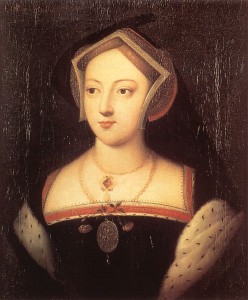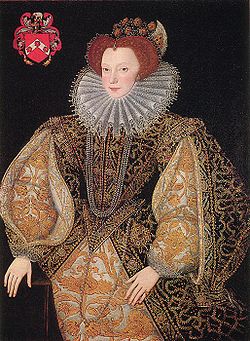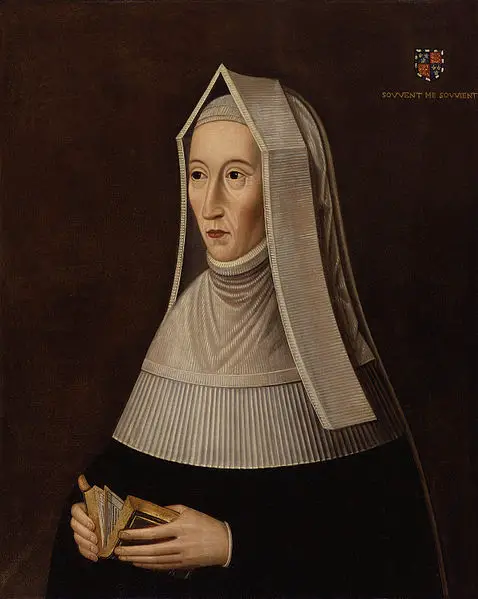 Mary Boleyn was probably the eldest daughter of Sir Thomas Boleyn and Elizabeth Howard. She was most likely born at Blicking Hall, Norfolk. The date of her parents' union is open to question, but fragmentary evidence indicates that they had married by 1501 at the latest. Mary was probably born at the turn of the 16th century. It is possible that she accompanied Henry VIII's sister Mary to France in 1514 in readiness for her marriage to Louis XII, but whether she resided at the French court has never been resolved. Hostile rumours in circulation during the 1530s claimed that Louis' successor, Francois I, knew Mary to have been promiscuous, but it is uncertain whether this meant she had gained her supposedly dubious reputation in France. Possibly Mary indeed resided at the French court during her teenage years, but if so she had certainly returned to England by early 1520, for her marriage to Henry VIII's attendant, William Carey, occurred on 4 February that year. It is possible that she served Katherine of Aragon, but there is no evidence that she did so.
Mary Boleyn was probably the eldest daughter of Sir Thomas Boleyn and Elizabeth Howard. She was most likely born at Blicking Hall, Norfolk. The date of her parents' union is open to question, but fragmentary evidence indicates that they had married by 1501 at the latest. Mary was probably born at the turn of the 16th century. It is possible that she accompanied Henry VIII's sister Mary to France in 1514 in readiness for her marriage to Louis XII, but whether she resided at the French court has never been resolved. Hostile rumours in circulation during the 1530s claimed that Louis' successor, Francois I, knew Mary to have been promiscuous, but it is uncertain whether this meant she had gained her supposedly dubious reputation in France. Possibly Mary indeed resided at the French court during her teenage years, but if so she had certainly returned to England by early 1520, for her marriage to Henry VIII's attendant, William Carey, occurred on 4 February that year. It is possible that she served Katherine of Aragon, but there is no evidence that she did so.
Either before or after her marriage, Mary probably began a liaison with Henry VIII. In historical fiction, their relationship has been portrayed as true love, but scarcely any evidence survives about it. In 1528, Henry VIII beseeched the pope to issue him with a dispensation to marry a woman related to himself in the first degree of affinity, in other words, the sister of a former mistress. In 1524, Mary gave birth to a daughter, Katherine, and a son, Henry, was born two years later. Whether they were fathered by the king or by Carey is uncertain. Carey himself died in the summer of 1528, probably from the sweating sickness. His death left Mary in a difficult financial situation, and the king himself informed her sister, Anne, that it was Thomas Boleyn's duty to support Mary. At the same time, Anne was being pursued by Henry VIII as his prospective bride after the annulment of his marriage to Katherine of Aragon. The Boleyn family were correspondingly favoured in the way of political offices, and Mary’s father and brother were both elevated. Anne herself was elevated to the marquisate of Pembroke in 1532. Shortly afterwards, she and the king departed for Calais to meet with Francois I of France, attended by Mary and their respective households. Possibly Mary attended her sister’s coronation the following June, which occurred after her secret marriage to the king and the public declaration that the Aragon marriage was null and void.
Unlike her father and brother, Mary received little in the way of material rewards following Anne’s royal marriage, but her clandestine marriage to William Stafford in 1534 ensured that no rewards would be forthcoming. The pregnant Mary was banished from court, and she was reduced to writing to Thomas Cromwell seeking his favour and assistance, for her father had promptly cut off her allowance. The outcome of her pregnancy is unknown, and whether she bore any more children is uncertain. It is possible that she resided at Calais or one of the Boleyn properties, including Rochford Hall in Essex.
In 1536, Mary's siblings, George and Anne, were arrested, imprisoned and condemned for treason, along with four other men. Mary’s relationship with Henry VIII may have provided the grounds for the annulment of his marriage to Anne. After the deaths of her siblings, Mary spent the rest of her life in obscurity. She died in July 1543 in her mid-forties. Her daughter Katherine was appointed a maid of honour to Anne of Cleves in 1539, and her son Henry served in the royal household six years later. Mary’s niece Elizabeth, who became queen in 1558, showed great favour to both of her Boleyn cousins.
Written by Conor Byrne, author of Katherine Howard: A New History and Queenship in England: 1308–1485 Gender and Power in the Late Middle Ages. Conor is a British graduate with a degree in History from the University of Exeter. Conor has been fascinated by the Tudors, medieval and early modern history from the age of eleven, particularly the lives of European kings and queens. His research into Katherine Howard, fifth consort of Henry VIII of England, began in 2011-12, and his first extended essay on her, related to the subject of her downfall in 1541-2, was written for an Oxford University competition. Since then Conor has embarked on a full-length study of Queen Katharine's career, encompassing original research and drawing on extended reading into sixteenth-century gender, sexuality and honour. Some of the conclusions reached are controversial and likely to spark considerable debate, but Conor hopes for a thorough reassessment of Katherine Howard's life. Conor runs a historical blog which explores a diverse range of historical topics and issues. He is also interested in modern European, Russian, and African history, and, more broadly, researches the lives of medieval queens, including current research into the defamed 'she-wolf' bride of Edward II, Isabella of France.
Conor is currently studying for a Masters.



Leave a Reply